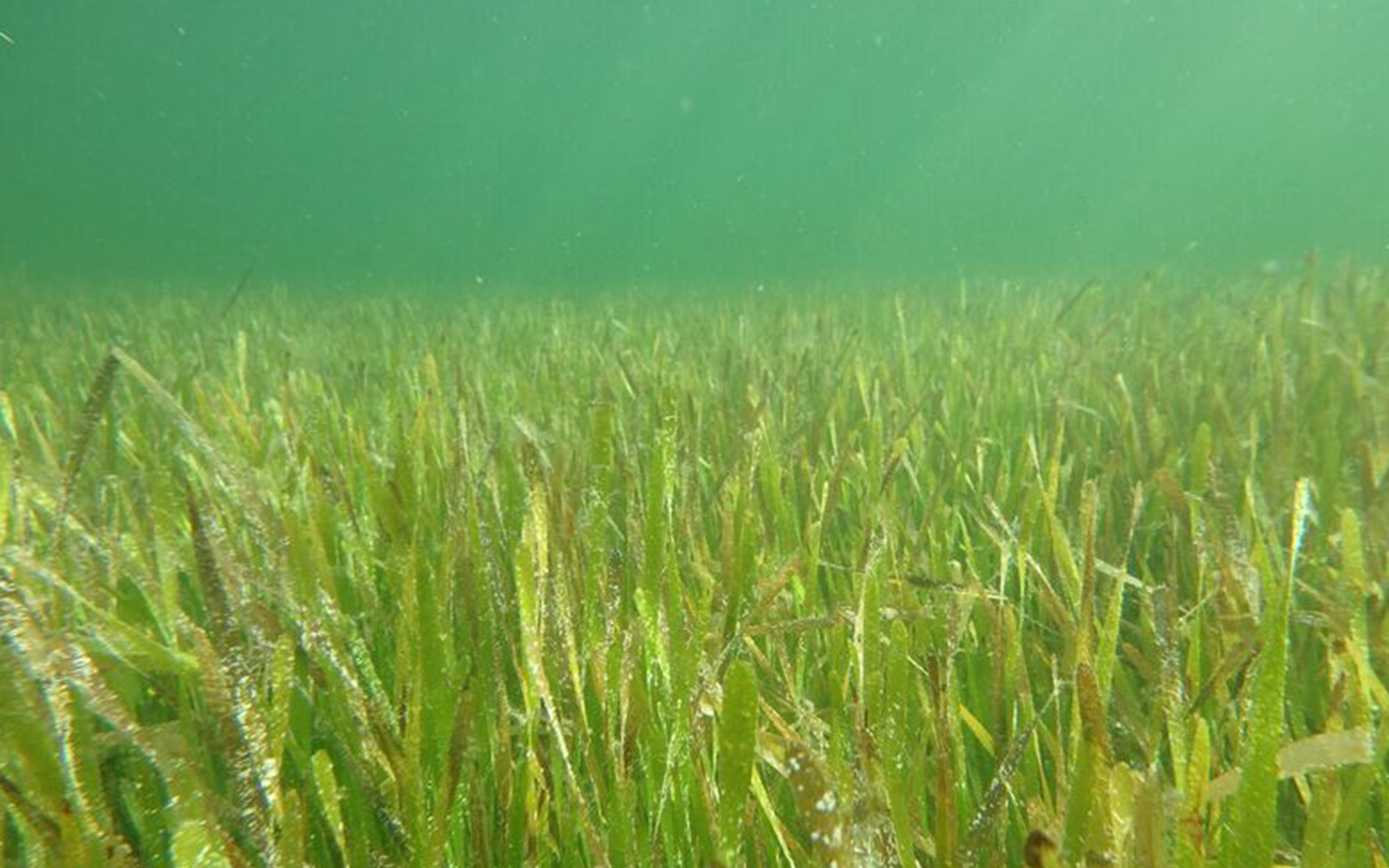- Title: Tropicalization of Western Atlantic Seagrass Beds
- Principal Investigators: Justin Campbell
- Funding Amount: $842,845
- Funding Source: National Science Foundation
- Timeline: 08/02/2017 - 12/31/2021
The warming of temperate marine communities is becoming a global phenomenon, producing new biotic interactions that can result in a series of cascading effects on ecosystem structure. For example, the poleward expansion of herbivore populations can lead to the consumption of habitat-forming vegetation, which alters the ecological services provided by coastal environments (a phenomenon known as tropicalization).
Many of the habitats at risk, such as kelp forest and seagrass beds, provide foundational habitat that supports complex food webs. Seagrass meadows along the Gulf of Mexico are currently experiencing an influx of tropical grazers, however a integrated understanding of how these communities might ultimately respond is lacking.
This project describes the first experiment to quantify the disruptive effect of tropicalization on the ecology of a widely-distributed seagrass. A major contribution of this project will be the development of a seagrass research collaborative network to serve as a platform for broader scientific inquiry and future collaboration.


The collaboration spans a total of 11 institutions, and this network fosters extensive collaborations among junior and senior scientists, as well as many undergraduate and graduate students.
This study develops a large-scale manipulative experiment across the Caribbean, premised upon a comparative network of 15 marine sites, which quantifies how temperature and light interact with grazer effects on the dominant tropical seagrass, Thalassia testudinum. Sites have been selected along a latitudinal gradient (from Bermuda to Panama), such that light and temperature vary, allowing the investigators to test for the effects of abiotic factors on the ecological effects of increased grazing (tropicalization simulated via artificial leaf clipping). At each of the 15 marine sites, grazing treatments are crossed with nutrient manipulations in a factorial design for 18 weeks, after which seagrass structure and functioning will be assessed via measurements of areal productivity, shoot density, aboveground biomass, and carbohydrate storage. Experiments are conducted both in the summer and winter seasons, when abiotic gradients are at their weakest and strongest, respectively. Emerging statistical techniques in hierarchical mixed modeling and structural equation modeling will further allow for integration of experimental and observational data.
Team
Principal Investigator
Justin E. Campbell
Assistant Professor
305-348-2201
jcampbel@fiu.edu
MSB 250C
